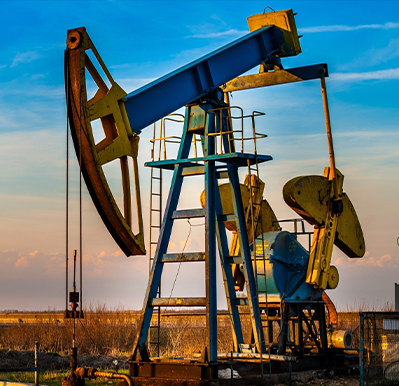- Afrikaans
- Albanian
- Amharic
- Arabic
- Armenian
- Azerbaijani
- Basque
- Belarusian
- Bengali
- Bosnian
- Bulgarian
- Catalan
- Cebuano
- Corsican
- Croatian
- Czech
- Danish
- Dutch
- English
- Esperanto
- Estonian
- Finnish
- French
- Frisian
- Galician
- Georgian
- German
- Greek
- Gujarati
- Haitian Creole
- hausa
- hawaiian
- Hebrew
- Hindi
- Miao
- Hungarian
- Icelandic
- igbo
- Indonesian
- irish
- Italian
- Japanese
- Javanese
- Kannada
- kazakh
- Khmer
- Rwandese
- Korean
- Kurdish
- Kyrgyz
- Lao
- Latin
- Latvian
- Lithuanian
- Luxembourgish
- Macedonian
- Malgashi
- Malay
- Malayalam
- Maltese
- Maori
- Marathi
- Mongolian
- Myanmar
- Nepali
- Norwegian
- Norwegian
- Occitan
- Pashto
- Persian
- Polish
- Portuguese
- Punjabi
- Romanian
- Russian
- Samoan
- Scottish Gaelic
- Serbian
- Sesotho
- Shona
- Sindhi
- Sinhala
- Slovak
- Slovenian
- Somali
- Spanish
- Sundanese
- Swahili
- Swedish
- Tagalog
- Tajik
- Tamil
- Tatar
- Telugu
- Thai
- Turkish
- Turkmen
- Ukrainian
- Urdu
- Uighur
- Uzbek
- Vietnamese
- Welsh
- Bantu
- Yiddish
- Yoruba
- Zulu
Understanding the Key Distinctions Between Casing and Tubing in Drilling Operations
Understanding the Differences Between Casing and Tubing in Oil and Gas Production
In the oil and gas industry, the complexities of drilling and extraction processes are underscored by the critical components known as casing and tubing. Both play vital roles in ensuring the safe and efficient production of hydrocarbons, but they serve distinct functions and possess different characteristics. Understanding the differences between casing and tubing is essential for professionals in the field, as well as for those interested in energy production.
Casing The Structural Backbone
Casing serves as a structural framework for the wellbore, designed to withstand the substantial pressures and environmental challenges encountered during drilling and production. Made from steel, casing is implemented during drilling to stabilize the well and prevent the collapse of the surrounding rock formation. Once the drilling is complete, the casing is inserted into the drilled hole and cemented to the walls. This cementing process creates a barrier, ensuring that drilling fluids do not escape into the surrounding formations and that fluids from various layers do not mix.
One of the primary purposes of casing is to protect freshwater aquifers from contamination by hydrocarbons or other fluids produced during extraction. Consequently, different types of casing are utilized at various depths, each tailored to address specific geological conditions. The outermost casing layer, known as surface casing, is typically set at shallow depths, while intermediate casing and production casing are installed deeper within the well, depending on the geological strata being penetrated.
Tubing The Conduit for Production
Conversely, tubing is the pipe used to transport oil, gas, and other fluids from the production zone to the surface. After casing has been installed and cemented, tubing is inserted into the production casing. Tubing plays a crucial role in enabling the flow of hydrocarbons, and unlike casing, it is not cemented in place, allowing for easier retrieval and replacement when necessary.
what are the differences between casing and tubing?

Tubing is designed to handle the pressures and flow rates associated with production. It is manufactured from high-strength materials to resist corrosion, erosion, and wear during the extraction process. Additionally, the internal diameter of tubing is typically smaller than that of casing, optimizing flow rates and allowing for efficient production.
Material and Design Differences
While both casing and tubing are made from steel, they differ in terms of specifications and purposes. Casing is thicker and stronger than tubing because it must bear the weight of the geological formations and resist collapse under pressure. Conversely, tubing needs to be lightweight for ease of handling but strong enough to withstand the pressures from the production fluids.
Furthermore, the design of casing and tubing also varies. Casing often features a threaded or welded connection to secure joints over long lengths, whereas tubing relies on coupling connections that allow for expansion and contraction during temperature changes.
Conclusion The Crucial Roles of Casing and Tubing
In summary, both casing and tubing are indispensable in the oil and gas extraction process, albeit serving different functions. Casing provides structural integrity and protection for the wellbore, while tubing is the conduit through which production fluids are transported to the surface. Understanding these differences is fundamental for professionals working in the industry, as the successful operation of oil and gas wells heavily depends on the proper installation and maintenance of these components. With the right knowledge and application, casing and tubing contribute significantly to the efficiency and safety of hydrocarbon production, ensuring that energy resources are harnessed responsibly and effectively.
-
Tubing Pup Joints: Essential Components for Oil and Gas OperationsNewsJul.10,2025
-
Pup Joints: Essential Components for Reliable Drilling OperationsNewsJul.10,2025
-
Pipe Couplings: Connecting Your World EfficientlyNewsJul.10,2025
-
Mastering Oilfield Operations with Quality Tubing and CasingNewsJul.10,2025
-
High-Quality Casing Couplings for Every NeedNewsJul.10,2025
-
Boost Your Drilling Efficiency with Premium Crossover Tools & Seating NipplesNewsJul.10,2025







